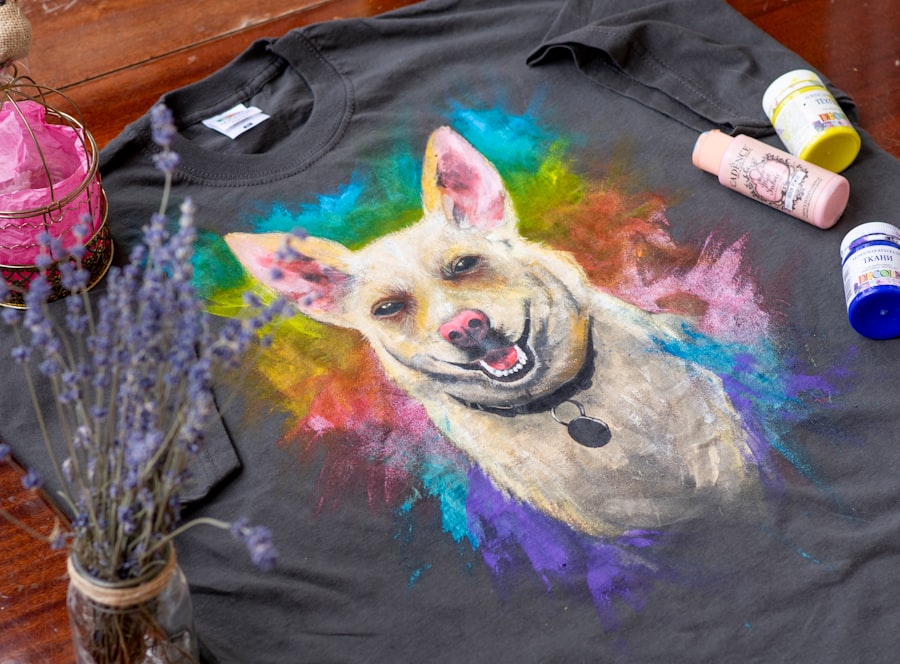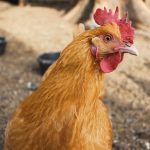Lavender chickens, also referred to as self-blue chickens, are a distinctive breed of poultry that has garnered increasing interest among poultry enthusiasts in recent years. These birds are characterized by their unique lavender or blue-gray feathering, which distinguishes them from other chicken varieties. Beyond their aesthetic appeal, lavender chickens are valued for their docile and amiable temperament, making them a favored choice for backyard flocks and small-scale agricultural operations.
This article will delve into the historical background and origins of lavender chickens, examine their physical attributes and behavioral traits, discuss popular lavender chicken breeds, provide guidance on their care and maintenance, and explore their various applications in both domestic and commercial settings.
Table of Contents
- 1 History and Origins of Lavender Chickens
- 2 Characteristics and Appearance of Lavender Chickens
- 3 Popular Lavender Chicken Breeds
- 4 Care and Maintenance of Lavender Chickens
- 5 Uses of Lavender Chickens
- 6 Conclusion and Future of Lavender Chicken Breeds
- 7 FAQs
- 7.1 What are lavender chickens?
- 7.2 What breeds of chickens can have lavender coloring?
- 7.3 Are lavender chickens recognized by poultry associations?
- 7.4 What are the characteristics of lavender chickens?
- 7.5 Do lavender chickens require special care?
- 7.6 Can lavender chickens be used for egg production?
- 7.7 Are lavender chickens popular among poultry enthusiasts?
Key Takeaways
- Lavender chickens are a unique and beautiful breed known for their striking appearance and gentle nature.
- The history and origins of lavender chickens can be traced back to the 17th century in Europe, where they were prized for their ornamental value.
- Lavender chickens are known for their distinctive lavender-colored feathers, gentle temperament, and good egg-laying abilities.
- Some popular lavender chicken breeds include the Orpington, Ameraucana, and Silkie, each with its own unique characteristics and traits.
- Proper care and maintenance of lavender chickens include providing a balanced diet, regular health check-ups, and a clean living environment to ensure their well-being.
History and Origins of Lavender Chickens
The Emergence of the Lavender Color
It is believed that the lavender color mutation first appeared in the Orpington breed, paving the way for the development of lavender chickens. The lavender gene is a dilution of the black gene, resulting in the distinctive blue-gray plumage that characterizes lavender chickens.
Refining the Breed
Over time, breeders have worked tirelessly to refine and standardize the lavender coloration, leading to the development of several recognized lavender chicken breeds. Today, lavender chickens can be found in various parts of the world, where they are highly prized for their beauty, gentle nature, and versatility.
A Sought-After Breed
Lavender chickens have become a distinct and sought-after breed in their own right, cherished by poultry enthusiasts and farmers alike. Their unique appearance, combined with their friendly and docile temperament, has made them a popular choice for backyard flocks and commercial farms.
Characteristics and Appearance of Lavender Chickens

Lavender chickens are known for their striking appearance, with feathers that range from a pale blue-gray to a deep lavender color. Their plumage has a unique iridescent quality that gives them a shimmering and ethereal appearance. Lavender chickens typically have a medium-sized body with a broad, deep chest and a well-rounded shape.
They have a single comb and wattles that are usually red in color. Their legs are typically slate or blue in color, which complements their lavender plumage beautifully. In addition to their stunning appearance, lavender chickens are known for their gentle and friendly nature.
They are docile and easy to handle, making them an excellent choice for families with children or first-time chicken owners. Lavender chickens are also known for their hardiness and adaptability, making them well-suited to a variety of climates and living conditions. They are good foragers and enjoy free-ranging, but they also do well in confinement.
Overall, lavender chickens are a delightful addition to any flock, bringing both beauty and charm to the farm or backyard.
Popular Lavender Chicken Breeds
There are several popular lavender chicken breeds that are recognized for their unique characteristics and beauty. One of the most well-known lavender chicken breeds is the Lavender Orpington. This breed is a favorite among chicken enthusiasts for its striking lavender plumage and friendly disposition.
The Lavender Orpington is a dual-purpose breed, valued for both its meat and egg production as well as its ornamental qualities. Another popular lavender chicken breed is the Blue Orpington. This breed is similar to the Lavender Orpington but has a slightly different shade of blue-gray plumage.
The Blue Orpington is also known for its gentle nature and excellent egg-laying abilities, making it a popular choice for backyard flocks. The Silkie chicken is another beloved lavender chicken breed. Silkies are known for their unique fluffy plumage and gentle temperament.
They come in a variety of colors, including lavender, which adds to their appeal as an ornamental breed. Silkies are also valued for their broody nature and make excellent mothers when given the opportunity to hatch and raise chicks.
Care and Maintenance of Lavender Chickens
Caring for lavender chickens is relatively straightforward and requires attention to their basic needs for food, water, shelter, and healthcare. Like all chickens, lavender chickens require a balanced diet that includes high-quality poultry feed, fresh water, and access to grit for digestion. They also benefit from occasional treats such as fruits, vegetables, and mealworms.
Providing a safe and comfortable coop or housing is essential for lavender chickens. The coop should be well-ventilated, predator-proof, and provide adequate space for the number of chickens in the flock. Bedding such as straw or wood shavings should be used to keep the coop clean and dry.
Regular health checks and preventative care are important for maintaining the well-being of lavender chickens. This includes monitoring for signs of illness or injury, keeping the coop clean, and providing regular access to dust baths for natural parasite control. Additionally, lavender chickens should be vaccinated against common poultry diseases to prevent outbreaks within the flock.
Uses of Lavender Chickens

Ornamental and Exhibition Purposes
Their gentle nature and striking appearance make them a popular choice for ornamental or exhibition purposes. They are often showcased at poultry shows and exhibitions where their unique plumage can be admired by enthusiasts.
Dual-Purpose Capabilities
In addition to their ornamental qualities, lavender chickens are also valued for their dual-purpose capabilities. They are excellent layers of large brown eggs and produce flavorful meat that is prized by many poultry enthusiasts. Their calm temperament makes them easy to handle and work with, making them an ideal choice for small-scale meat production.
Breeding and Broodiness
Furthermore, lavender chickens are known for their broody nature, making them excellent mothers when given the opportunity to hatch and raise chicks. This makes them valuable for breeding purposes and perpetuating their unique genetics within the poultry community.
Conclusion and Future of Lavender Chicken Breeds
In conclusion, lavender chickens are a unique and beautiful breed that has captured the hearts of poultry enthusiasts around the world. Their striking appearance, gentle nature, and versatility make them valuable additions to any flock or farm. As interest in rare and ornamental poultry breeds continues to grow, it is likely that lavender chickens will remain popular choices for backyard flocks, small farms, and exhibition purposes.
The future of lavender chicken breeds looks bright as dedicated breeders work to preserve and improve the genetics of these unique birds. Efforts to standardize the lavender coloration and refine the breed’s characteristics will ensure that lavender chickens continue to thrive and bring joy to poultry enthusiasts for generations to come. Whether kept for their ornamental qualities, dual-purpose capabilities, or broody nature, lavender chickens are sure to remain cherished members of the poultry community for years to come.
If you’re interested in learning more about chicken coops and how to properly care for your lavender chicken breeds, check out this article on 10 Essential Tips for Building a Chicken Coop. This article provides valuable information on the importance of a well-designed coop for the health and well-being of your chickens, including tips on ventilation, space requirements, and predator protection. It’s a must-read for any lavender chicken owner looking to provide the best possible environment for their flock.
FAQs
What are lavender chickens?
Lavender chickens, also known as self-blue chickens, are a unique breed of chicken that have a diluted black coloration, resulting in a soft, lavender or blue-gray plumage.
What breeds of chickens can have lavender coloring?
The lavender coloring can be found in several chicken breeds, including Orpingtons, Ameraucanas, and Silkies. Each breed may have slight variations in the shade of lavender.
Are lavender chickens recognized by poultry associations?
Yes, lavender varieties of certain chicken breeds are recognized by poultry associations such as the American Poultry Association and the American Bantam Association.
What are the characteristics of lavender chickens?
Lavender chickens typically have a gentle and docile temperament, making them suitable for backyard flocks. They are also known for their unique and attractive plumage color.
Do lavender chickens require special care?
Lavender chickens do not require any special care beyond what is typical for their specific breed. They should be provided with proper housing, nutrition, and healthcare like any other chicken.
Can lavender chickens be used for egg production?
Yes, lavender chickens can be used for egg production, depending on the specific breed. For example, Lavender Orpingtons are known for their good egg-laying capabilities.
Are lavender chickens popular among poultry enthusiasts?
Lavender chickens have gained popularity among poultry enthusiasts due to their unique coloring and gentle temperament. They are often sought after for backyard flocks and exhibition poultry shows.
Meet Walter, the feathered-friend fanatic of Florida! Nestled in the sunshine state, Walter struts through life with his feathered companions, clucking his way to happiness. With a coop that’s fancier than a five-star hotel, he’s the Don Juan of the chicken world. When he’s not teaching his hens to do the cha-cha, you’ll find him in a heated debate with his prized rooster, Sir Clucks-a-Lot. Walter’s poultry passion is no yolk; he’s the sunny-side-up guy you never knew you needed in your flock of friends!







